Most weedy herbs, grasses and bulbs rapidly grow, reproduce and spread via wind, water and animals throughout the landscape.
Weedy herbs are soft stemmed, low growing and proliferate throughout bushland areas and gardens. Additionally, weedy grasses often compete with native plants for space and dramatically increase the fuel load and fire risk.
| Weed | Photo |
|---|---|
|
Agapanthus - Agapanthus praecox subsp. orientalis Characteristics: Perennial tufted lily with glossy, succulent leaves up to 80cm long and 5cm wide. Flower stalks reach 1.2m tall, bearing clusters of tubular blue or white flowers in summer. Risk Rating: Very High Risk Control Methods: Prevention & hand pulling |
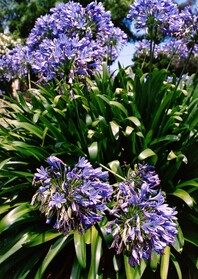
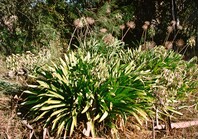
|
|
Arum Lily - Zantedeschia aethiopica Characteristics: A perennial herb featuring a tuberous rhizome, with large, glossy green arrowhead-shaped leaves extending on lengthy fleshy stalks up to 1.5m. Produces large white funnel-shaped flowers adorned with a vibrant yellow spike in late winter to spring. WARNING: Poisonous, ingestion can be fatal. Risk Rating: Very High Risk Control Methods: Prevention, hand pulling and spot spraying |

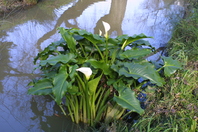
|
|
Common Onion Grass - Romulea rosea var. australis Characteristics: A vertical perennial herb emerging from an underground corm, with fine oval leaves up to 35cm long, resilient enough to withstand mowing. It bears small spring flowers in shades of pink to purple with yellow centres. Risk Rating: Medium Risk Control Methods: Prevention, hand pulling and spot spraying |
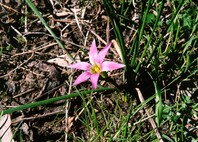

|
|
Freesia - Freesia species hybrids Characteristics: A vertical perennial herb arising from an underground corm, with leaves up to 25cm long and a prominent mid-vein. It produces fragrant, trumpet-shaped flowers in spring, typically cream to pale yellow with occasional purple markings. Risk Rating: High Risk Control Methods: Spot spraying and cut & paint |
|
|
Angled Onion/Three-Cornered Garlic - Allium triquetrum State Restricted Noxious Weed Characteristics: A herb with a 20-40cm tall triangular stem, with small, white bulbs emitting a strong onion scent. Produces white, bell-shaped flowers from winter to spring, with seeds forming in spring. Risk Rating: High Risk Control Methods: Prevention, hand pulling and spot spraying |
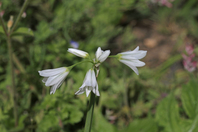
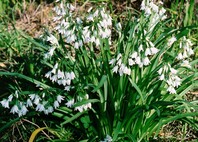
|
|
Black/Blackberry Nightshade - Solanum nigrum Characteristics: This short-lived herbaceous plant or small shrub typically reaches heights of up to 1.25m. While usually upright, it may spread as it matures. Its small star-shaped flowers, measuring 7-12mm across, form clusters in the leaf forks near the branch tips. These flowers boast five petals, which are either white or tinged with purple. Risk Rating: Medium Risk Control Methods: Spot spraying |

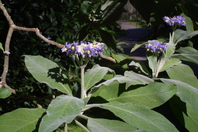
|
|
Asparagus Fern - Asparagus densiflorus Characteristics: A spreading ground cover plant with upright stems and dense foliage resembling foxtails. Its flowers are tiny, white or pale pink, and emit a fragrance. The fruit consists of shiny round berries that start green and mature to orange-red, reaching up to 1 cm in width, each containing a single black seed. Risk Rating: Medium Risk Control Methods: Spot spraying and cut & paint |
|
|
Cat's Ear, Flatweed - Hypochoeris radicata Characteristics: A tufted perennial plant with hairy leaves arranged in a basal rosette and upright, slightly branched flower stems devoid of leaves. It produces yellow daisy flowers on branching stems ranging from 10 to 80cm in height during spring to summer. Risk Rating: Moderately High Risk Control Methods: Hand pulling, spot spraying |
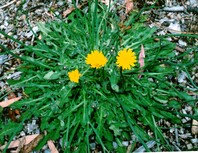
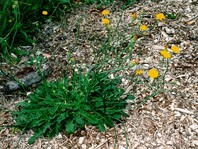
|
|
Capeweed - Arctotheca calendula Characteristics: An annual herbaceous plant with yellow flowers featuring a black center. It displays white hairs on both upper and lower leaf surfaces. Maturing up to 50cm in diameter, it forms a rosette at the base with serrated and deeply lobed leaves. It rapidly grows to outcompete pasture but struggles to establish in well-grassed areas. Risk Rating: Medium Risk Control Methods: Prevention, hand pulling and spot spraying |
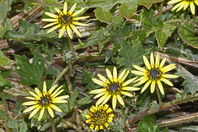
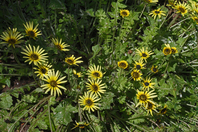
|
|
Common Centuary - Centaurium erythraea Characteristics: An annual or biennial herb featuring a basal rosette of leaves. It produces clusters of pink flowers on upright stems reaching up to 50cm in height during summer. It is a prevalent weed in disturbed areas and tends to proliferate into undisturbed bushland. Risk Rating: Moderately High Risk Control Methods: Hand pulling and spot spraying |
|
|
Ribwort - Plantago lanceolata Characteristics: A perennial herb featuring dense terminal flower spikes, ranging from 1 to 7cm long, on tall stems. It forms a basal rosette of leaves with five distinct parallel veins and tends to proliferate into undisturbed bushland. Risk Rating: Medium Risk Control Methods: Hand pulling, lawn mowing, cut back & clear off and spot spraying |
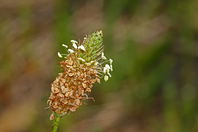
|
|
Seaside Daisy - Erigeron karvinskianus Characteristics: A spreading, rhizomatous perennial herb reaching 40cm in height. It bears small white daisy flowers with yellow centres, which darken to deep pink with age. Flowering occurs throughout most of the year. Its sparsely hairy leaves, often lobed, have a variable shape, typically narrow and ovate. Risk Rating: High Risk Control Methods: Prevention, hand pulling and spot spraying |
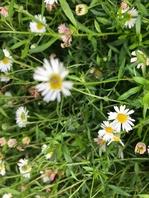
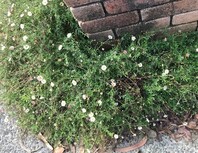
|
|
African Daisy - Osteospermum fruiticosum Characteristics: A perennial herb or subshrub reaching up to 60cm in height. Its creeping stems root at nodes, quickly spreading over extensive areas. The fleshy dark green leaves feature several teeth. It bears showy white flowers with purple centers, blooming during the day from late winter to late spring and occasionally throughout the year. Risk Rating: High Risk Control Methods: Prevention, hand pulling and spot spraying |
|
|
Chilean Needle - Nassella neesiana State Restricted Noxious Weed Characteristics: A perennial grass forming tussocks, with flowering stems reaching 1m and bearing purple flowers. Its seeds feature a unique collar at the base of the awn, distinguishing it from native Spear Grasses. It outcompetes and displaces native grasses and other ground flora. Risk Rating: Very High Risk Control Methods: Prevention, hand pulling, lawn mowing, cut back & clear off and spot spraying |
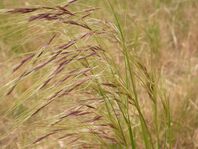
|
|
Cocksfoot - Dactylis glomerata Characteristics: This tall perennial features long, flat leaves with elongated ligules that are smooth and torn. Its spikelets, containing 3-5 flowers each, form dense one-sided clusters at the ends of branches. Flowering occurs from November to January. Risk Rating: High Risk Control Methods: Hand pulling and spot spraying |
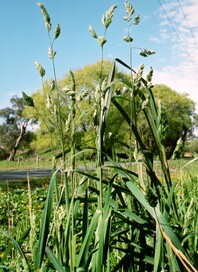
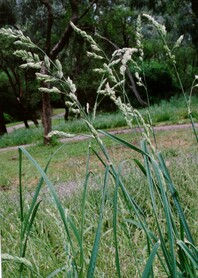
|
|
Couch Grass - Cynodon dactylon Characteristics: This durable perennial grass forms creeping or upright mats via runners and underground stems. Its leaves, typically hairless or finely hairy, are narrow and taper towards a point. Flower-heads resemble spokes of an umbrella or windmill, with up to 6 spikes extending from the end of the flower stalk. Flowering occurs during summer and autumn. Risk Rating: Moderately High Risk Control Methods: Hand pulling and spot spraying |
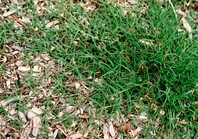
|
|
Drain Flat Sedge, Umbrella Sedge - Cyperus eragrostis Characteristics: A tufted perennial sedge with triangular flowering stems reaching up to 1m in height. It features bright green leaves shorter than the flower stems. The dull green flowerheads transition to reddish-brown or straw-colored during summer. Risk Rating: Medium Risk Control Methods: Hand pulling, lawn mowing, cut back & clear off and spot spraying |
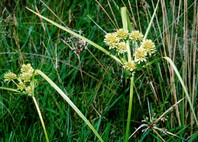
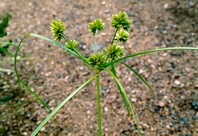
|
|
Fennel - Foeniculum vulgare Regionally Restricted Noxious Weed Characteristics: An upright biennial or occasionally annual herb, reaching heights of up to 2.5m, boasting a robust, branched taproot. Known for its potent aniseed fragrance, fennel plants are typically smooth-skinned without hairs. Its leaves, alternately arranged and measuring 30-50cm long, appear feathery due to numerous thread-like segments. The flowering head consists of smaller umbrella-like clusters of yellow petals, each approximately 1mm long, originating from a central point on the flower stalks. Risk Rating: Very High Risk Control Methods: Cut back & clear off, hand pulling, spot spraying and cut & paint |
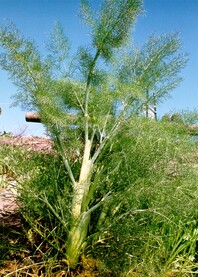
|
|
Kikuya - Pennisetum clandestinum Characteristics: A robust, perennial plant with extensive rhizomes and sturdy, highly branched stolons. It can climb fences and poles. Has bright green leaves and inconspicuous flowers. Risk Rating: Very High Risk Control Methods: Prevention, hand pulling, cut back & clear off, spot spraying, and lawn mowing |
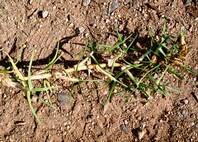
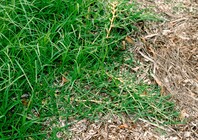
|
|
Quaking Grasses - Briza maxima, Briza minor Characteristics: A vertical annual grass ranging from 5 to 60 cm tall, featuring drooping branchlets and small shell-like husks in early spring. It poses a significant threat to native vegetation by displacing wildflowers and orchids and hindering the germination of indigenous species in tussock spaces. Risk Rating: Moderately High Risk Control Methods: Prevention, hand pulling, cut back & clear off, spot spraying, and lawn mowing |
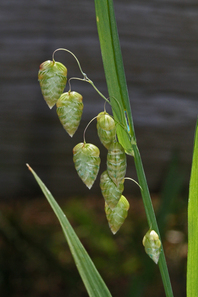

|
|
Montbretia - Crocosmia crocosmiiflora Characteristics: A perennial herb, typically 60 cm tall but occasionally reaching 100 cm. The soft leaves, often drooping, lack hairs and have entire margins with pointed tips. The trumpet-shaped flowers, usually orange-red with yellow centres, measure 3-4 cm long and 2-5 cm wide. Flowering predominantly occurs in summer and autumn, extending to spring in warmer climates. The fruit consists of capsules (5-10 mm long) that change from green to brown, becoming shrivelled as they mature. Risk Rating: Very High Risk Control Methods: Spot spraying and cut & paint |

|
|
Oxalis, Soursob - Oxalis pes-caprae Characteristics: An vertical perennial reaching up to 30cm tall, characterised by clover-like leaves that may display brownish spots on top. It bears yellow trumpet-like flowers above the foliage, blooming from winter to spring. Tiny pale bulbils are frequently found at the base of the plants on stems held above the ground. This species is widespread in roadside and disturbed areas. Risk Rating: Very High Risk Control Methods: Prevention and spot spraying |
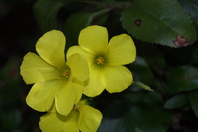
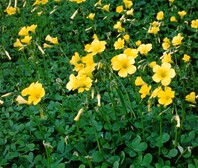
|
|
Pale Wood-sorrel - Oxalis incarnata Characteristics: Resembling Soursob but with lighter foliage and pale pink flowers appearing later in spring. Typically found more frequently in moist environments. Risk Rating: Very High Risk Control Methods: Prevention and spot spraying |
|
|
Large-flower Wood-sorrel - Oxalis purpurea Characteristics: Low-growing foliage and sizable pink to purple flowers bloom from late winter to spring. Both leaves and flowers are notably larger compared to the other two Oxalis species mentioned here. Risk Rating: High Risk Control Methods: Prevention and spot spraying |
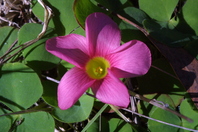
|
|
Paterson's Curse/Salvation Jane - Echium plantagineum Regional Controlled Noxious Weed Characteristics: A tall biennial herb, reaching up to 1m in height, emerging from a basal rosette of ovate leaves with noticeable lateral veins. The leaves become lanceolate along upright stems. Its bluish-purple tubular flowers feature protruding stamens. It thrives in areas with disturbed soil or overgrazing. Risk Rating: High Risk Control Methods: Hand pulling, spot spraying and prevention |
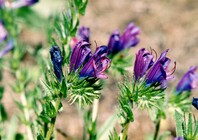
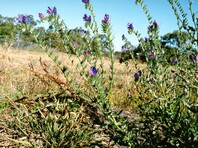
|
|
Panic Veldt Grass - Ehrharta erecta Characteristics: This perennial grass exhibits bright green, flat leaf blades, ranging from 5-20 cm long and 2-10 mm wide, with soft hairs on the surface. Flowering occurs via inflorescences borne on stems, which are 10-80 cm long and can emerge at any time during the year. Seeding happens every 6 weeks, with nearly 100% viability. Risk Rating: Very High Risk Control Methods: Hand pulling and spot spraying |
|
|
Annual Veldt-grass - Ehrharta longiflora Characteristics: A tufted annual grass ranging from 10 to 60cm tall. Its bright green leaves feature crinkled margins near the base and a prominent midvein. It produces flattened cylindrical flower stems longer than its leaves, adorned with purplish nodes. Spikelets droop, often with a purplish hue. Germination occurs in autumn, and flowering takes place from spring to summer. Risk Rating: High Risk Control Methods: Hand pulling, lawn mowing, cut back & clear off and spot spraying |

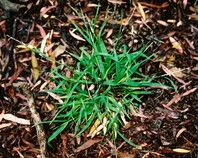
|
|
Brown-top Bent - Agrostis capillaris Characteristics: A perennial grass growing up to 40cm tall, featuring narrow bluish-green leaves and extensive underground runners. It produces seeds in summer and outcompetes native groundcover vegetation, making it challenging to distinguish among other grass species. Risk Rating: High Risk Control Methods: Prevention, hand pulling, cut back & clear off and spot spraying |
|
|
Pampas Grass - Cortaderia selloana Characteristics: A towering perennial grass forming large tussocks up to 3m tall. It boasts bluish-green, arching leaves with razor-sharp edges and produces plume-like white flowers in late summer and autumn. Risk Rating: High Risk Control Methods: Hand pulling and spot spraying |
|
|
Rat's-tail Fescues - Vulpia bromoides, Vulpia myuros Characteristics: Delicate, upright annual grasses ranging from 1 to 20cm in height, commonly displaying red or purplish bases and nodes. Its flowerheads are fine and bristly, with some species like Vulpia bromoides having a one-sided arrangement. It quickly germinates, flowers, and sets seed in dry, open environments, often forming dense mats. Risk Rating: Moderately High Risk Control Methods: Hand pulling, lawn mowing, spot spraying |
|
|
Serrated Tussock - Nassella trichotoma Regional Controlled Noxious Weed Characteristics: A compact tussock reaching 50cm, featuring leaves with distinctive serrations that can be felt by running fingers down their edges. Leaves are green in summer, turning yellow-green in winter, with new growth initially upright but bending as it matures. The base of the leaves is white, and it produces plentiful purplish open seed heads in summer. Risk Rating: Very High Risk Control Methods: Prevention, hand pulling, cut back & clear off, spot spraying and lawn mowing |
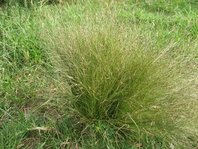
|
|
Spear Thistle/Black Thistle - Cirsium vulgare Regional Controlled Noxious Weed Characteristics: A deep-rooted biennial herb reaching up to 1.5m tall. Seedlings sprout in autumn and spring, forming rosettes. Its leaves are dark green above, paler below, coarse, deeply lobed, and prickly. One to several stems emerge, bearing purple flowers in summer, succeeded by fluffy white seed heads. Risk Rating: Moderately High Risk Control Methods: Prevention, hand pulling and spot spraying |
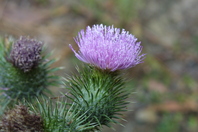
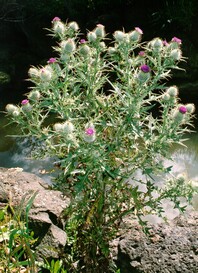
|
|
Sweet Vernal Grass - Anthoxanthum odoratum Characteristics: A tufted perennial grass, reaching 60cm tall, emitting a pungent medicinal odour, particularly noticeable from the roots. Its green flowerheads transition to straw-coloured as seeds disperse. It aggressively invades native ground flora, particularly in lower slopes and moist regions, flowering from spring to summer. Risk Rating: High Risk Control Methods: Hand pulling, lawn mowing, cut back & clear off, spot spraying |
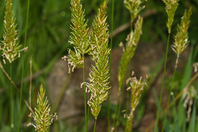
|
|
Watsonia - Watsonia meriana var bulbillifera Regional Controlled Noxious Weed Characteristics: A perennial plant featuring stiff, sword-shaped leaves with a prominent midrib, arranged in an ascending fan-like formation. Vertical slender stems reach up to 2m in height, bearing small sheath-like leaves. It produces orange to red flowers in late winter to spring and reproduces via corms and bulbils on the stem. Risk Rating: Very High Risk Control Methods: Prevention, hand pulling, cut back & clear off and spot spraying |

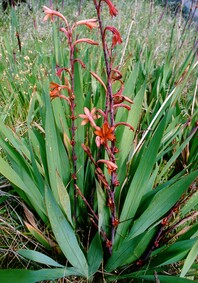
|
|
Wild Oats - Avena fatua Characteristics: A tufted annual grass reaching heights of up to 150 cm, featuring hairless leaves. Its flower-heads form open and spreading panicles, measuring 40 cm long and 20 cm wide. Each floret is sparsely silky-hairy in the lower half, with 2-4 1 mm long teeth at its apex, that detach individually from the spikelet when mature. Risk Rating: High Risk Control Methods: Hand pulling, lawn mowing and spot spraying |
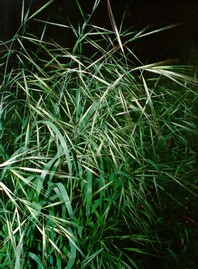
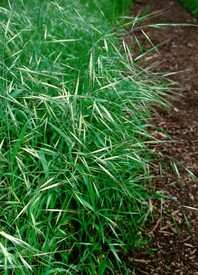
|
|
Yorkshire Fog Grass - Holcus lanatus Characteristics: A robust, shallow-rooted perennial grass growing up to 80cm tall, characterised by soft, dense hairs that lend its leaves a pale grey hue. Its flowerheads appear reddish-purple before opening. It aggressively colonises native ground flora, thriving especially in wet regions, and blooms from spring to summer. Risk Rating: High Risk Control Methods: Hand pulling, lawn mowing, cut back & clear off, spot spraying |
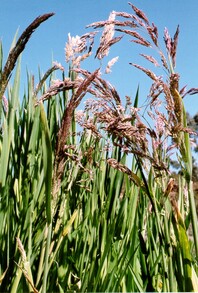
|







